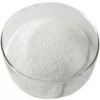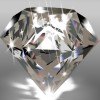Lactose Monohydrate Anhydrous Manufacturer Exporter BP Ph Eur USP NF Food AR ACS Grade Manufacturer Exporter
Crystal Clear Products is a manufacturer exporter company manufacturing several chemicals including Lactose Monohydrate Anhydrous and IP BP Ph Eur USP NF JP ACS AR Analytical Reagent FCC Food Grade, Pharmaceutical Chemicals at best prices. The group has offices and factories in India USA and UAE and toll manufacturers in China and sells to almost every country in the world.
The manufacturing facilities of our partner manufacturers have one or more of FDA-cGMP-GLP certification, ISO-9001 certification, Halal and/or Kosher certification, REACH pre-registration ISO-22000 HACCP. We also allow third party inspection of products offered. We can offer small quantities from laboratory and trial packs to large shipments of container loads of material.
Hazard Statements:
Not a hazardous substance or mixture according to Regulation (EC) No. 1272/2008.
This substance is not classified as dangerous according to Directive 67/548/EEC.
Not considered hazardous by the OSHA Hazard Communication Standard (29 CFR 1910.1200)
Signal Word: None
Transport Information
DOT USA, TDG Canada & ADR/RID Europe: Not dangerous goods.
IMO/IMDG: Not dangerous goods.
IATA/ICAO: Not dangerous goods.
You may please visit:
Lactose Monohydrate Anhydrous SDS of Manufacturers
Lactose Monohydrate Anhydrous IP BP Ph Eur USP NF FCC Food AR ACS Reagent Grade Manufacturers

CAS Number 63-42-3 for Anhydrous and 64044-51-5 for Monohydrate Lactose, EINECS: 200-559-2, Molecular Weight: 342.30 anhydrous, Chemical Formula: C12H22O11 anhydrous
Specifications of Lactose Monohydrate USP NF Grade:
Lactose Monohydrate is a natural disaccharide, obtained from milk, which consists of one glucose and one galactose moiety. [NOTE: Lactose Monohydrate may be modified as to its physical characteristics. It may contain varying proportions of amorphous lactose.]
Clarity and color of solution: A solution of 1 g in 10 mL of boiling water is clear and nearly colorless. Determine the absorbance of this solution at a wavelength of 400 nm. The absorbance divided by the path length in centimeters is not more than 0.04.
Identification:
A: Infrared Absorption.
B: To pass the chromatographic test.
C: Dissolve 250 mg in 5 mL of water. Add 3 mL of ammonium hydroxide, and heat in a water bath at 80C for 10 minutes: a red color develops.
Specific rotation: Dissolve 10 g by heating in 80 mL of water to 50 . Allow to cool, and add 0.2 mL of 6 N ammonium hydroxide. Allow to stand for 30 minutes, and dilute with water to 100 mL: the specific rotation, calculated on the anhydrous basis, determined at 20C, is between +54.4 and +55.9.
Microbial limits: The total aerobic microbial count does not exceed 100 cfu per g, the total combined molds and yeasts count does not exceed 50 cfu per g, and it meets the requirements of the test for absence of Escherichia coli.
Acidity or alkalinity: Dissolve 6 g by heating in 25 mL of carbon dioxide-free water, cool, and add 0.3 mL of phenolphthalein: the solution is colorless, and not more than 0.4 mL of 0.1 N sodium hydroxide is required to produce a red color.
Loss on drying: Dry it at 80 for 2 hours: the monohydrate form loses not more than 0.5% of its weight, and the modified monohydrate form loses not more than 1.0% of its weight.
Water: between 4.5% and 5.5%, determined on a preparation containing lactose monohydrate in a mixture of methanol and formamide (2:1).
Residue on ignition: not more than 0.1%, determined on a specimen ignited at a temperature of 600C±25C.
Heavy metals: Dissolve 4 g in 20 mL of warm water, add 1 mL of 0.1 N hydrochloric acid, and dilute with water to 25 mL: the limit is 5 Micro-g per g.
Protein and light-absorbing impurities: Measure the light absorption of a 1% (w/v) solution in the range of 210 to 300 nm. The absorbance divided by the path length in centimeters is not more than 0.25 in the range of 210 to 220 nm and is not more than 0.07 in the range of 270 to 300 nm.
Specifications of Anhydrous Lactose USP NF Grade:
DEFINITION
Anhydrous Lactose is O-β-d-galactopyranosyl-(1→4)-β-d-glucopyranose (β-lactose), or a mixture of O-β-d-galactopyranosyl-(1→4)-β-d-glucopyranose and O-β-d-galactopyranosyl-(1→4)-α-d-glucopyranose (α-lactose).
IDENTIFICATION
A. Infrared Absorption
B. Thin-Layer Chromatographic Identification Test: To pass the test.
Content of Alpha and Beta Anomers: To pass the test.
Residue on Ignition: NMT 0.1%
Clarity and Color of Solution: To pass the test.
Loss on Drying:
Analysis: Dry a sample at 80C for 2 h.
Acceptance criteria: NMT 0.5%
Water Determination: To pass the test.
Acceptance criteria: NMT 1.0%
Microbial Enumeration Tests and Tests for Specified Microorganisms: The total aerobic microbial count is NMT 100 cfu/g and the total combined molds and yeasts count is NMT 50 cfu/g. It meets the requirements of the test for absence of Escherichia coli.
Protein and Light-Absorbing Impurities: To pass the test.
Acidity or Alkalinity:
Sample solution: Dissolve 6 g by heating in 25 mL of carbon dioxide-free water, cool, and add 0.3 mL of phenolphthalein.
Acceptance criteria: The solution is colorless, and NMT 0.4 mL of 0.1 N sodium hydroxide is required to produce a pink or red color.
Optical Rotation, Specific Rotation:
Sample solution: Dissolve 10 g by heating in 80 mL of water to 50°. Allow to cool, and add 0.2 mL of 6 N ammonium hydroxide. Allow to stand for 30 min, and dilute with water to 100 mL.
Acceptance criteria: +54.4° to +55.9°, calculated on the anhydrous basis, at 20C.
Specifications of Lactose Monohydrate BP Ph Eur Grade:
C12H22O11-H2O --- 360.3
Action and use: Excipient.
DEFINITION
O-β-d-Galactopyranosyl-(1→4)-α-d-glucopyranose monohydrate.
CHARACTERS
Appearance: White or almost white, crystalline powder.
Solubility: Freely soluble in water, practically insoluble in ethanol (96 per cent).
IDENTIFICATION
First identification: A, D
Second identification: B, C, D
A. Infrared absorption spectrophotometry.
Comparison lactose monohydrate CRS.
B. Thin-layer chromatography.
To pass the test.
C. Dissolve 0.25 g in 5 mL of water. Add 5 mL of ammonia and heat in a water-bath at 80C for 10 min. A red colour develops.
D. Water (see Tests).
TESTS
Solution S: Dissolve 1.0 g in boiling water, allow to cool and dilute to 10.0 mL with water.
Appearance of solution: Solution S is clear and not more intensely coloured than reference solution.
Acidity or alkalinity: Dissolve 6.0 g by heating in 25 mL of carbon dioxide-free water, cool and add 0.3 mL of phenolphthalein solution. The solution is colourless. Not more than 0.4 mL of 0.1 M sodium hydroxide is required to change the colour of the indicator to pink or red.
Specific optical rotation: + 54.4 to + 55.9 (anhydrous substance).
Water: 4.5 per cent to 5.5 per cent, determined on 0.50 g, using a mixture of 1 volume of formamide and 2 volumes of methanol as solvent.
Sulfated ash: Maximum 0.1 per cent, determined on 1.0 g.
Microbial contamination:
TAMC: acceptance criterion 102 CFU/g.
Absence of Escherichia coli.
Specifications of Lactose Anhydrous BP Ph Eur Grade:
Anhydrous Lactose
C12H22O11 --- 342.3 --- CAS 63-42-3
Action and use: Excipient.
DEFINITION
O-β-d-Galactopyranosyl-(1→4)-β-d-glucopyranose or mixture of O-β-d-galactopyranosyl-(1→4)-α-d-glucopyranose and O-β-d-galactopyranosyl-(1→4)-β-d-glucopyranose.
CHARACTERS
Appearance: White or almost white, crystalline powder.
Solubility: Freely soluble in water, practically insoluble in ethanol (96 per cent).
IDENTIFICATION
First identification: A, D
Second identification: B, C, D
A. Infrared absorption spectrophotometry.
Comparison anhydrous lactose CRS.
B. Thin-layer chromatography
To pass the test.
C. Dissolve 0.25 g in 5 mL of water. Add 5 mL of ammonia and heat in a water-bath at 80C for 10 min. A red colour develops.
D. Water (see Tests).
TESTS
Solution S: Dissolve 1.0 g in boiling water, allow to cool and dilute to 10.0 mL with water.
Appearance of solution: Solution S is clear and not more intensely coloured than reference solution.
Acidity or alkalinity: Dissolve 6.0 g by heating in 25 mL of carbon dioxide-free water, cool and add 0.3 mL of phenolphthalein solution. The solution is colourless. Not more than 0.4 mL of 0.1 M sodium hydroxide is required to change the colour of the indicator to pink or red.
Specific optical rotation: + 54.4 to + 55.9 (anhydrous substance).
Water: Maximum 1.0 per cent, determined on 1.00 g, using a mixture of 1 volume of formamide and 2 volumes of methanol as solvent.
Sulfated ash: Maximum 0.1 per cent, determined on 1.0 g.
Microbial contamination:
TAMC: acceptance criterion 100 CFU/g.
Absence of Escherichia coli.
Lactose Monohydrate Analytical Reagent Grade:
C12H22O11-H2O --- Formula Wt 360.32
CAS Number 64044-51-5
REQUIREMENTS
Water (H2O): 4.0-6.0%
MAXIMUM ALLOWABLE
Insoluble matter: 0.005%
Residue after ignition: 0.03%
Dextrose: Passes test
Sucrose: Passes test
Heavy metals (as Pb): 5 ppm
Iron (Fe): 5 ppm.
Contact for Monograph, Uses, Matnfacturing Process, etc of Lactose Monohydrate Anhydrous and JP IP BP Ph Eur USP NF FCC Food AR ACS Reagent Grade Manufacturer Supplier Exporter
MANUFACTURER EXPORTER
MUMBAI 400009, INDIA. TEL: (OFFICE) 91-9322665100
info@manufacturerexporter.com
Copyright and Usual Disclaimer is Applicable
Last updated
11/19/2022
Manufacturer Suppliers Exporters at Wholesale Prices from India USA and around the Globe
Calcium Lactate -- Calcium Lactate Gluconate -- Calcium lactobionate -- Calcium Bromo Lactobionate -- Calcium Glubionate -- D-Glucuronolactone -- D-Gluconolactone -- Sodium Lactate -- Sodium lactobionate --
Aspartame Acesulfame -- Acesulfame Potassium -- Aspartame -- Dextrose -- Lactose -- Maltodextrin -- Insoluble Saccharin -- Sodium Saccharin -- Calcium Saccharin -- Sucrose -- Sucralose --






